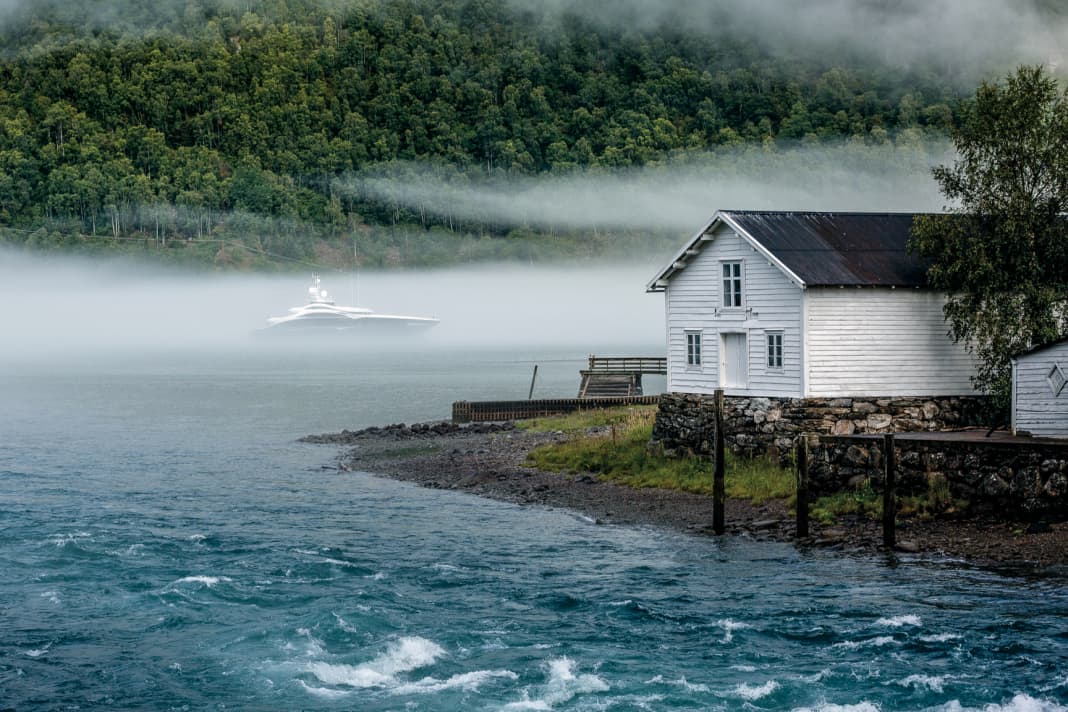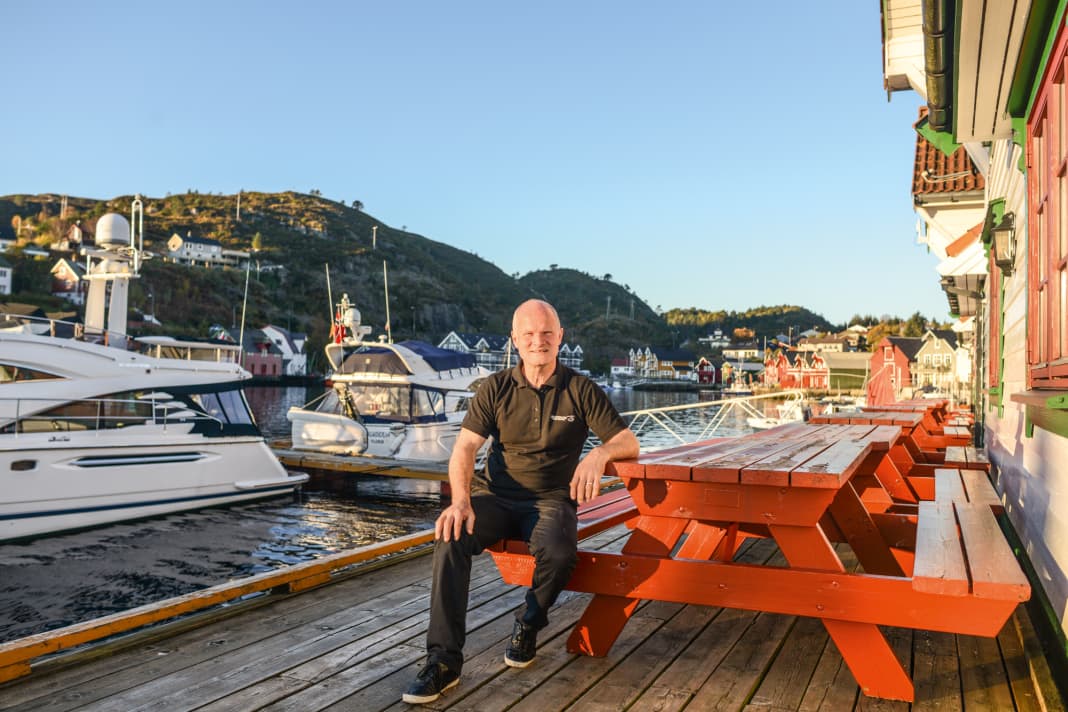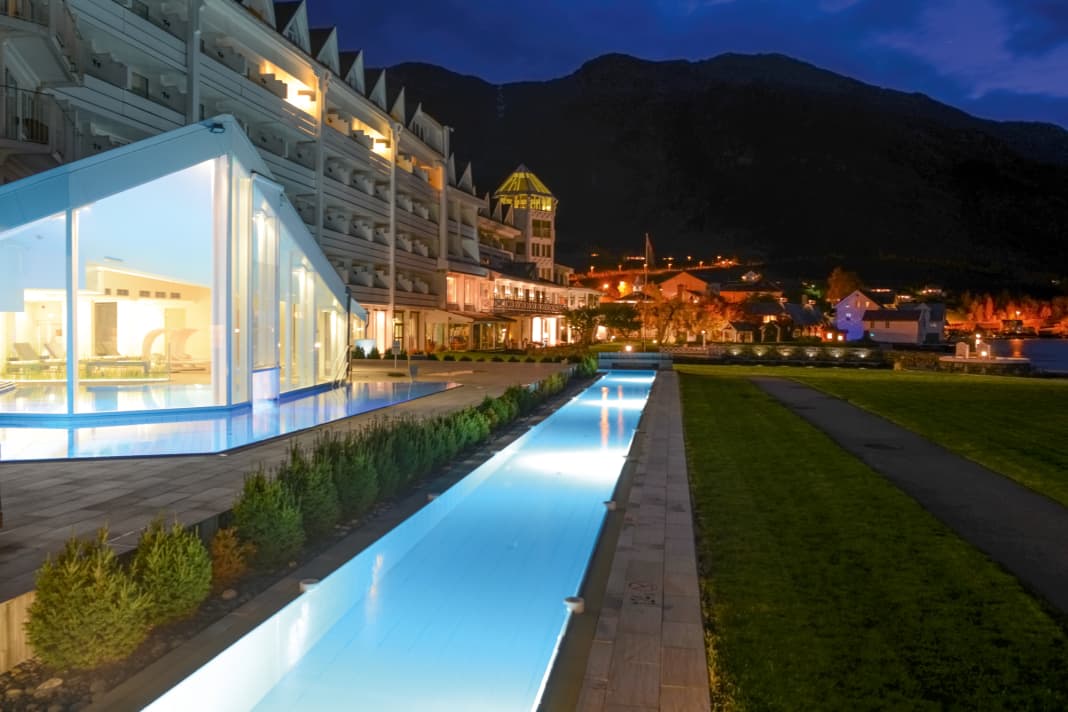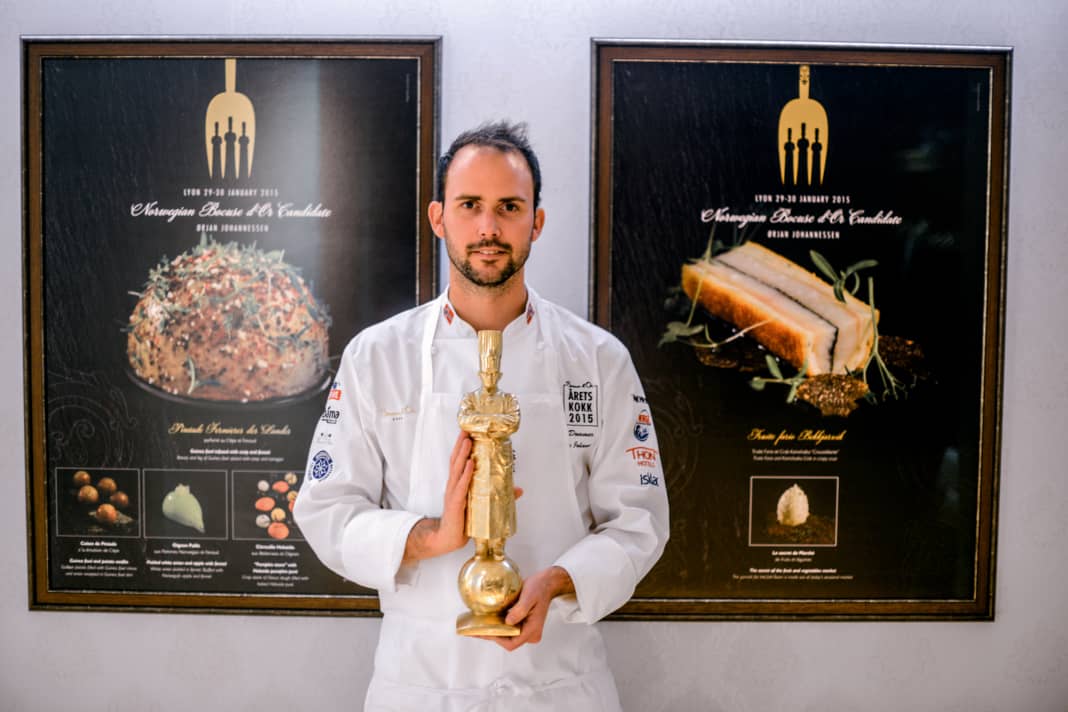





"Norway in October?" My friends from the Côte d'Azur tap their temples. "Do you want to get depressed? You'd better come down to Monaco. We have to transfer a yacht."
The offer sounds good, but the new territory is tempting. Norway is currently preparing to attract more large yachts to the far north. "Superyacht Norway" is the name of the organisation founded specifically for this purpose, and Ola Hiis Bergh is its marketing frontman. And contrary to all fears, the former tourism director of Bergen welcomes us to his home country - one of the rainiest cities in Europe (240 days a year) - in bright sunshine. "I think the country wants to advertise itself," he says in flawless German, smiles and gets the programme off to a flying start - we can only stay a few days, but we want to see as much as possible. On the drive into town, Hiis Bergh briefly explains the history of Superyacht Norway. The association, which is financed by various agencies and restaurants and primarily lobbies for the sparsely populated destination (5.2 million inhabitants on 385,000 square kilometres), is just two years old. "I laid the foundations for this," explains our driver, "almost unconsciously during my time as tourism director." When the cruise industry in Europe was still in its infancy, Hiis Bergh founded "Cruise Norway", an association of ports and harbours, in order to better present themselves to the shipping companies, which would then send their ships north and not just to the Mediterranean. "The initiative has been extremely successful and has probably brought hundreds of thousands of additional tourists to Norway," says Hiis Bergh, who after his retirement - the man is now over 80 years old! - continues to work as a cruise consultant.
Profit from the cruise boom
The enquiry from Inge Halstensen from Bekkjarvik, around 25 nautical miles south of Bergen, finally gets the superyacht issue rolling. Halstensen would also like to profit from the cruise boom with his hotel and adjoining restaurant. However, the facility turns out to be too small for the ships, which are now very large and sometimes carry many thousands of passengers. "There's no capacity here for more than 500 guests," summarises Hiis Bergh. However, he suggests an alternative to the visibly disappointed Halstensen: Large yachts could very well be accommodated here. Halstensen - perhaps a little more reserved in nature than the average Norwegian - is said to have literally cheered, promised Hiis Bergh all support, but also made it a condition that Halstensen would take care of building a certain infrastructure. "With just one sentence," says Hiis Bergh, "I basically had a new job."
Meanwhile, we roll through the centre of Bergen. On the agenda: lunch at the fish market ("Fisketorget" in Norwegian) and a ride on the Fløibanen, which takes us up one of the seven hills that surround Bergen and bring so much rain to the city of 280,000 inhabitants because the clouds stick to them. These are two recommended programme items: At the fish market there is a crash course in North Sea seafood, which is also delivered to the yachts - even the long-legged king crabs - and from the 320 metre high Fløyen we have a view of the city and in particular the jetties for the large yachts. It's clear from up here that you can't really reside in a more central location in Bergen. Giant yachts such as "A" and "Eclipse", both of which have already been here, anchor or moor at Festingskaien. Several yachts up to 60 metres long moor directly in front of the 4-star hotel "Havnekontoret" and are therefore only a few steps away from the historic Tyskebryggen (German Bridge) and its trading houses from the Hanseatic era.
A look behind the scenes at the silver manufacturer "Arven"
Hidden in a side street here is the Arven silver factory, which supplies the Norwegian royal family, among others, offers products for almost every budget and also allows tours of the production facilities (by prior arrangement). The female part of our small tour group has to be gently pushed outside - after all, we are heading north.
Next destination in Norway: Kalvåg
Kalvåg, around 100 nautical miles from Bergen, is our next destination. From here, we will head south again. The speed ferry takes four hours to reach the pier not far from the small fishing village, whose attraction is still brightly lit on this dark evening. The Fosse family's restaurant "Knutholmen" seems almost unreal. While there is no sign of life in the alleyways, a few Norwegians are still sitting in Knutholmen drinking (sinfully expensive) wine despite the late hour. "Welcome," beams Svein Inge Fosse, senior manager of Knutholmen, and serves up the catch of the day. His daughter Martina, young but already award-winning, has combined halibut with beetroot and young potatoes. On a scale of the best fish dishes of my life, this dish ranks in the top ten. "Wait and see," her father qualifies, "tomorrow we're organising a seafood buffet here. Even the locals praise it."



The next morning. Kalvåg is extremely colourful. White, red, green and yellow wooden houses, so-called rorbuer, flank the very sheltered harbour, which used to serve as a bad-weather refuge for shipping. There are two galleries, a supermarket, even a spa and, of course, the "Knutholmen", where Svein Inge Fosse has already laid out the survival suits. They go lobster fishing and the planned seafood buffet still needs to be topped up. Only now, in October/November, are private individuals without a commercial licence allowed to lay out up to ten lobster baskets - after all, the next generation should be able to enjoy the good stock. "I've also taken yacht owners here," says Fosse, as we pull the lobster pots out of the water between the rocks. They obviously enjoy this unspoilt experience."
High-ranking visitor to the "Knutholmen"
He has already had "Savannah", "Northern Star", "Luna", "Kamalaya", "Ilona" and "Serene" on site. Up to 140 metres of yacht can fit on the quay. Anchoring is of course also possible. Duty-free refuelling, security, a helicopter and, of course, all kinds of entertainment can be organised. "For the 'Serene' owner and his guests, for example, we organised a dinner on a secluded beach, for another yacht owner a lunch on a rock with a view of the open Atlantic." Longline fishing is also very popular, says Fosse. "I lay out the line the day before so that the guests can actually catch something the following day and then have dinner with us in the evening."
We are also successful and pull three lobsters, several fish and plenty of crabs out of the baskets. In the evening, they are already on the buffet, which is truly unrivalled and once again underpins Martina's culinary skills. However, anyone hoping to dine with her in Ibiza or Monaco in the near future will be disappointed. The chef is currently building a house in Kalvåg!
Onwards to the south of Norway
The next morning, a friend of Fosse's has moored his 20 metre long Fleming right in front of the "Knutholmen". He invites us to take a look round, but we have to head further south.
Our next destination is Gudvangen on the Nærøyfjord, an 18-kilometre-long branch of the gigantic Sognefjord and a World Heritage Site. Due to time constraints, we are travelling by car; by yacht it would be 141 nautical miles from Kalvåg. About halfway to Bergen, the captain would have to turn off into the Sognefjord - the deepest in Europe (up to 1308 metres!) - and then sail between cliffs around 1000 metres high to the south-eastern end of the fjord in the direction of Bakka and Gudvangen. Here, in the narrowest fjord in Europe, you can anchor or moor in the very unspoilt village of Bakka with a maximum of 50 yachts.
Although Gudvangen offers a slightly better infrastructure, the BOOTE EXCLUSIV recommendation for this region is Bakka. Here you are largely spared from cruise tourism and passengers on the hybrid ferry and can easily visit the brand new Viking village or the magical caves in and near Gudvangen by tender. It is said that completely individual programmes such as private concerts or Viking dinners can be arranged for both attractions.
Next stage destination: Flåm
Flåm, our next stopover in Fjord Norway, is only 20 miles away and has a similar structure to Gudvangen. The town is primarily geared towards cruise tourists. There is an 80 metre long dock for yachts, where "Smeralda" was also moored for 14 days.
Things are quieter in neighbouring Aurland below the Stegastein viewing rock. A helipad in the village facilitates spontaneous arrivals and departures. Flåm can be reached in a few minutes by dinghy. Jon Olav Stedje is the marina manager there, who can provide adrenaline rushes of all levels with his team in the immediate vicinity. "We organise skiing and climbing trips, paragliding, skydiving and salmon fishing for our guests." RIB tours, visits to local farms or extended trekking tours are also on the list of possible activities. "If you have something to celebrate or process afterwards, we reserve the local brewery for you," smiles Stedje, pointing to a church-like building not far from the jetty, where award-winning and currently very popular craft beer is produced. If you want to invest your money as "purposefully" as possible, order the "Tors Hammer" at 13.2 per cent!
By train to Myrdal
However, we opt for a different attraction and take the railway up to Myrdal. The so-called Flåm Railway covers over 800 metres in altitude on these 20 kilometres, passes through 20 tunnels and offers fantastic views. The line, which connects to the international rail network, was built between 1923 and 1944; it used to take the workers around a month to complete one metre of tunnel. Incidentally, if you want to roll through here today with a certain amount of privacy, you can reserve an entire carriage for yourself.
Our Norway shuttle, driven by Ola Hiis Bergh, also rolls on through the impressive landscape. From Sognefjord we head to the Hardangerfjord and then directly to Norheimsund. The local maritime museum offers a quick tour, after which it definitely deserves the title "worth seeing" and - of interest to owners with an affinity for history - offers the 15-metre-long gentleman's yacht "Faun" for day charter, complete with crew. The historic trip costs around 300 euros per hour, during which suitable catering can also be arranged. We learn, for example, that the places around Norheimsund are famous throughout the country for fruit growing and apple juice. Almost every farm produces its own flavour, and every Norwegian has their own favourite.
Favourite place to go: Hotel "Ullensvang"
We discover ours in Lofthus, where the "Ullensvang" hotel belongs to the Superyacht Norway conglomerate and serves a juice that makes German organic and health food products look pale. The hotel, now in its fifth generation, has been run by the Utne family since 1846 and has since been expanded from two to 344 beds and equipped with a 40-metre jetty and a helipad. One highlight is the 88-metre-long (!) outdoor pool, which - illuminated and heated - offers a spectacular swimming experience on a cold late autumn day; the other highlight is hidden in the vaults of the award-winning hotel. It is the wine cellar of the "Ullensvang", which is not just a mere storehouse for fine wines - such as rare Veuve Clicquot Ponsardin - but also a private dining room. "The table in the centre," explains the maître d'hôtel, "used to be passed down from apple grower to apple grower. All the festivals here in the village were celebrated around it. At some point, the Utne family secured it and put it here." In any case, the atmosphere down here is extremely festive and perfect for a special occasion.



Last stop in Norway: Bekkjarvik
Another culinary highlight of the tour awaits us at our last stop. In Bekkjarvik, where Superyacht Norway was founded, the Johannessen family runs the "Bekkjarvik Gjestgiveri", where none other than the 2015 "world champion chef" is at the cooker. At the time, Ørjan Johannessen won the gold medal at the Bocuse d'Or, probably the most prestigious cookery competition in the world, which only takes place every two years. "Since winning," says Johannessen, "the restaurant has seen a sharp increase in reservation requests." The restaurant has even had to expand and can now cater for around 250 guests. The restaurant serves whatever the fishermen deliver fresh; the classics that are always available include fish soup, monkfish and meat from the island's free-range sheep. We try all three of the latter and leave the empty plates with an "excellent". It's lucky that Johannessen is on site at the time of the trip. He normally travels in autumn and winter; he is now booked for events all over the world. Catering for yachts, he says before he has to return to the kitchen, is of course possible and has already been booked.



Three yachts up to 70 metres long can be moored at the Bekkjarvik quay, which was developed for tourism by fishing entrepreneur Inge Halstensen. On land, owners and guests can enjoy a shopping centre with spa, outdoor activities and, of course, the Gjestgiveri, which is almost worth a visit to Norway on its own.
This article appeared in the 02/2017 issue of BOOTE Exclusiv.

